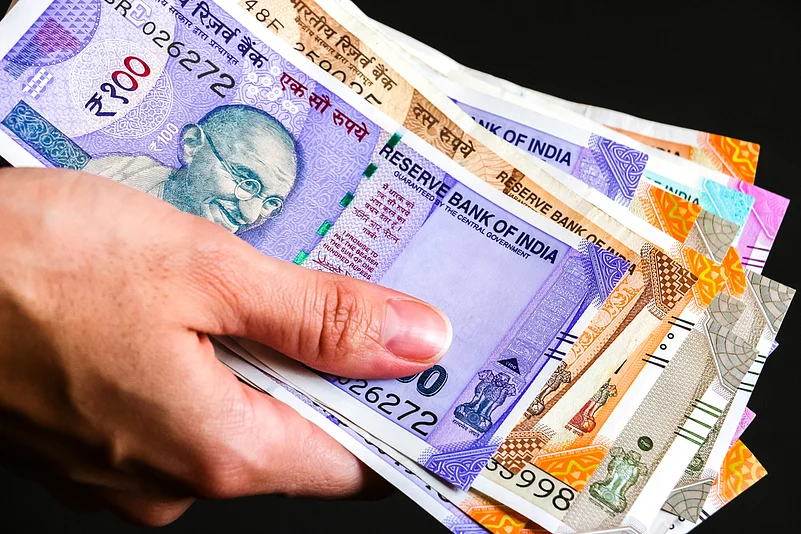It was an instinctive panic reaction. A herd mentality led people to walk away from risky options like stocks and mutual funds, and choose the sanctity of cash and bank deposits. While one of the reasons was to prevent losses as the stock markets initially tanked due to COVID-19 crisis, the other was to have enough ‘emergency money’ due to fears of job losses and salary cuts. Lower expenditure due to lockdowns aided the process in the past few months.
What is important is that this capital flight happened during times of lower interest rates. Investors were not bothered that their returns from bank deposits, after adjusting from higher inflation, were negative. All that they desired was to protect their savings from the economic havoc unleashed by the virus. The fear of the volatility of the stock markets was enough for them to seek the sanity of safety.
Advertisement
A recent RBI report (July 2020) stated that “COVID-19 related uncertainties have resulted in an outflow from mutual funds and a flight to currency (cash) holdings”. It added that this is typical in times of crises: “Several studies show that households tend to save more during a slowdown and income uncertainty.” The current virus crisis is more severe than a mere “slowdown” because of the predictions of negative growth over the next few quarters.
Figures tell this story in a stark manner. Even before the government imposed the first lockdown in end-March, people were terrified. Between January and March this year, people saved more than they spent. In this quarter (three-month period), the ‘gross financial assets’, or savings in the form of cash, bank deposits, stocks, mutual funds, life insurance, and provident funds, zoomed by more than 100% compared to the April-June 2019 quarter.
Advertisement
Of these savings, the largest increases were witnessed in bank deposits, which went up from a negative 1% of GDP to over 7% during the above-mentioned period. The money that was held as ‘currency’ (largely cash) was up by 130%. There was a minor drop in life insurance funds. As was expected, investments in stocks and mutual funds turned negative – from 0.6% of GDP to minus 0.8%. So, people saved more, and they did so in cash and deposits.
The trend continued over the next few months. This part of the narrative can be told better through the happenings within the mutual funds segment. Between April and June this year, investors expectedly jumped from equity-linked funds to debt ones. They avoided the prospect of losses from stocks, and embraced the fixed, though possibly lower, returns from bonds and securities. Less was acceptable, as long as it was safe and secure.
“Considering the need for emergency funds, and availability of liquidity at this critical time, short-term fixed deposits and open-ended debt mutual funds may serve as an ideal option for investors,” says Suresh Surana, Founder, RSM India. Cash and short-term deposits give people the flexibility in case they need money quickly for health and other purposes. However, the proportion of the shift will depend on the risk-averse nature of the individuals.
During a crisis, investors are more concerned about safety, rather than returns. “When people see their money stuck, they forget about returns, and only focus on safeguarding their capital,” says Shweta Jain, Founder, Investography. Most don't understand the impact on actual returns when interest rates fall before inflation rates. Rachit Chawla, Founder & CEO, Finway, explains that investors, therefore, don’t realise that they may lose money if they move to debt.
Advertisement
Those who do understand the link between inflation and interest rate tend to pre-empt future events. A recent report by Emkay Global Financial Services stated that even as retail inflation climbed to over 6%, the central bank is expected to still cut interest rates to revive the economy. “As interest rates fall, investors think that this is a good time to lock in with the current rates before any further cuts,” says Sujata Iyer Mahesh, Head (Research & Strategy), Grow Wealth.
Not just individuals but even institutions preferred debt instruments in the recent past. Pankaj Pathak, Fund Manager (Fixed Income), Quantum Mutual Fund explains that the market comfortably absorbed the higher issuance of government securities in the past two months. Most of the purchases were by the domestic banks, which have the money but are reluctant to lend, and mutual funds. “This added to the demand for credit-quality bonds,” adds Pathak.
Advertisement
Going forward, the RBI predicts three trends. The first is that in the immediate future, the financial assets of the households may go up further. Lower consumption and the concern for safety will prove to be key factors. “With construction activity at a standstill, there is a possibility of a shift by households from physical (real estate) to financial assets,” said its July report. Finally, individuals may borrow more from the banks to counter income losses.
Within financial assets, the trend may reverse from cash and bank deposits to stocks and mutual funds. “As the economy and businesses move towards normalcy, household savings may shift back to equity markets, which can deliver higher returns,” predicts Rahul Jain, Head, Edelweiss Wealth Management. This may be despite the inherent risks in stocks. Experts feel that the initial herd instinct to run towards safer options may run its course by August 2020.
Advertisement
“Over the next two years, investors can expect returns that are below the rate of inflation from the debt instruments. Equity, therefore, is likely to outperform debt,” explains a confident Tarun Birani, Founder & CEO, TBNG Capital Advisors. But investors beware! The volatility in the stock markets will continue for a few months. In India, the COVID-19 cases haven’t peaked yet. There are still uncertainties to contend with. So, don’t rush into shares the way you rushed out.















 Just one email a week
Just one email a week